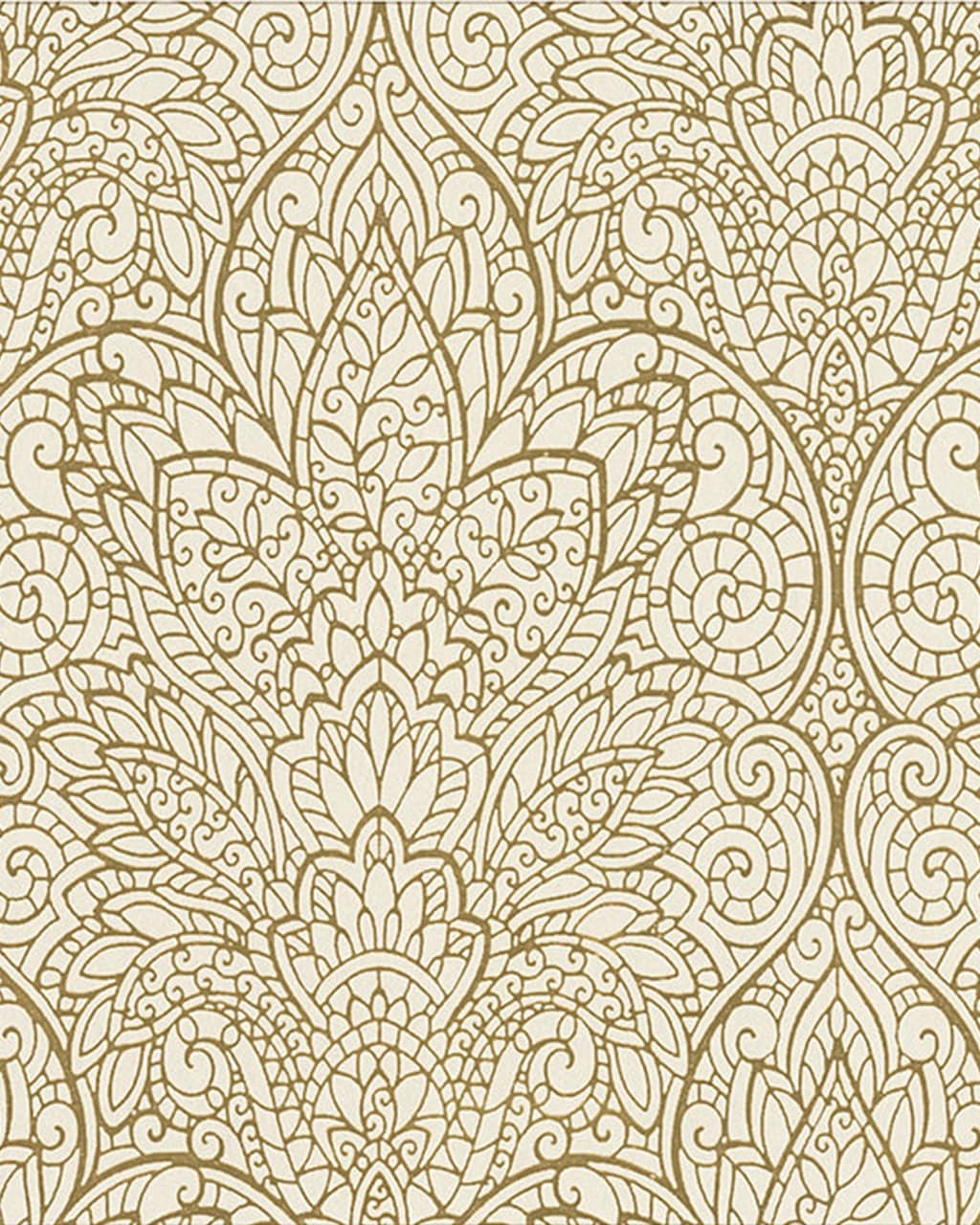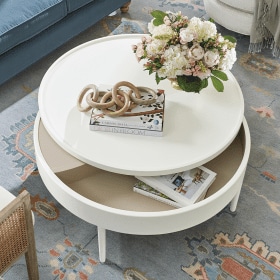 Whether you’re a fanatic of our removable wallpaper designs or only use paint to decorate your walls, learning about the long and ever-changing history of wallpaper is a treat for any home decorator.
Whether you’re a fanatic of our removable wallpaper designs or only use paint to decorate your walls, learning about the long and ever-changing history of wallpaper is a treat for any home decorator.
Wallpaper holds a special place in our hearts here on the How to Decorate blog for more reasons than one: it allows us to easily experiment with new decorating trends, be more creative with our walls than with traditional painting, or even make a decorating statement without serious long-term commitment.
Although it may not be as popular today as was hundreds of years ago, wallpaper still serves a unique purpose for those decorators who dare to be different. Journey with us as we peel back the history of wallpaper from its early origins in China to its classical resurgence in 16th century France all the way to today’s practical and modern “stick and peel” designs.

Early Origins of Wallpaper
No single decorator is credited with being the first to glue colorful paper designs to their walls, but we can say with confidence that China was the first culture to popularize the concept of wallpaper around 200 B.C.
Early Chinese decorators would adorn gathering spots within their homes and public spaces with rice-based wallpaper containing beautiful floral, landscape, and animal patterns.
These early designs were so unique and beautiful that they still influence wallpaper trends to this day.

Ballard Designs’ Chinoiserie Garden Wallpaper
For hundreds upon hundreds of years thereafter, Chinese wallpaper designs were an exclusive and highly sought-after commodity across Asia and the Middle East. Many cultures tried to create their own versions of wallpaper during this time, but it was widely accepted that China produced the best when it came to quality and originality.
Chinese decorative wallpaper eventually grew so popular across Asia and Middle Eastern nobility that it eventually made its way into the hands of wealthy European home decorators around the turn of the 16th century.
This is when the 1000+ year history of wallpaper designs starts changing very quickly and very dramatically. Let us explain…
Wallpaper is First Introduced to Europe
Little did anyone know it at the time, but the introduction of wallpaper to Europe around the 16th century also happened to coincide with new technological advancements in large scale block printing.
What once took a skilled craftsperson several months to make by hand could now be re-printed in mere seconds with heavy machinery.
Wallpaper quickly transformed from a privileged commodity of the wealthy to a mass produced home necessity sought after by decorators of all classes and cultures.

Painting of 16th century wallpaper in wealthy Dutch home by Pieter de Hooch (1665)
Of course, this sudden technological revolution didn’t mean every decorator thought mass produced wallpaper was the best quality option for their home.
Many aristocratic decorators still sought quality wallpaper materials that were hand crafted by only the most talented of designers and generally looked down upon mass produced designs.
That is, until a talented French craftsman by the name of Jean-Michel Papillon found a way to blend the best of both worlds: combining high quality, hand made, and unique repeating wallpaper designs that could only be produced with complex machinery.
How the French Changed Wallpaper Design Forever
Jean-Michel Papillon is often regarded as the inventor of modern wallpaper by historians because of how unique, clever, and easy-to-reproduce his 17th century repeating wallpaper designs actually were.
Before Papillon entered the scene, most hand-made and even mass-produced wallpaper was meant for, well, a single wall.
Unless wallpaper was a single color, designs of the 16th century or before were not meant to “wrap” or “bend” across corners. The more elaborate the design, the less likely it was you could fill the whole room with it.
- Ballard Designs’ Little Leaf Wallpaper and Quatrefoil Lattice Wallpaper
With Papillon’s introduction of small repeating designs that matched on both sides, beautiful wallpaper design concepts that could fill a whole room grew popular and became more accessible.
French designers dominated the popular market throughout the 16th, 17th, and 18th century by continuing to innovate Papillon’s repeating concept in unique ways. The country was even known for creating the renowned “Dominotiers”, a guild of talented painters and wallpaper makers known throughout Europe for their unique craft.
Wallpaper is Industrialized
As time went on and European society began to industrialize in the mid-19th century, wallpaper designs and production methods evolved with these changes for better and worse.
On one hand, the process required to mass produce beautiful and elaborate wallpaper designs was easier than ever. Decorators for once had too many wallpaper options at prices that would have been unbelievable only a few decades prior.
On the other hand, wallpaper’s biggest competitor—paint—was also benefiting from the industrial revolution, becoming a cheaper and more permanent option to color walls with.

19th century Wallpaper factory (Image Courtesy of CCI ARCHIVES)
Much like its earlier history in 16th century Europe, industrially produced wallpaper around the turn of the 20th century grew a reputation for being cheap and poor in quality.
Wealthy home decorators opted for higher quality and hand made wallpaper prints while the general public began to primarily choose paint for its longevity and affordability.
However, in the 1920s, the culture around wallpaper shifted yet again.
Advancements in printing made it possible to print high quality and highly colorful wallpaper designs never before seen on the market. These new designs, much to the delight of home decorators, became a must-have decorating staple of the Victorian Era.
- Victorian-inspired Wallpaper concepts from Ballard Designs, Delicate Fern and Leela Wallpaper
Wallpaper in the Modern Home
Even with such a vast array of design possibilities and stable consumer demand for the product, paper wallpaper pre-1950 was simply not durable.
Changes in humidity, scratches to the surface, or even simple mistakes during application could ruin a roll of wallpaper and, by its very nature, all the walls around it.
Once again, the wallpaper industry would need to innovate to overcome this challenge.

Sears’ Wallpaper advertisement; Image courtesty of Harmony House Wallpapers
Around the mid-1950s, plastic and washable wallpapers were introduced to the market as a potential solution to consumer complaints about paper materials.
Decorators responded well to this material change, but by this time in wallpaper history most households favored paint as their primary option for coloring walls. Wallpaper has since declined in terms of widespread usage by home decorators.
There are still decorating situations, however, where wallpaper would be an ideal alternative to paint: walls with repeating patterns, a fun design for a child’s bedroom, or in situations where design concepts would be impossible to paint.
Today, wallpaper is poised yet again to make a comeback in unexpected ways. Peel and stick designs have grown in popularity amongst renters seeking to rid their homes of the universal apartment beige without losing a security deposit.
Wallpaper designers continue to innovate with standalone or repeating designs that can truly turn any room of the home into a breathtaking piece of art, which is why we can’t wait to see the many trends and patterns the future holds for this unique product.

Find The Perfect Wallpaper For Your Home Today
If you’ve never considered using wallpaper before, there hasn’t been a better time in history to give it a try. Browse our entire collection of wallpaper offerings today and find the perfect design for your home’s walls you never knew you wanted.
We love wallpaper so much here at Ballard Designs that we wrote another article detailing all of our reasons why you need more wallpaper in your home.
Give our other wallpaper decorating blog a read, check out a few of our other helpful blogs below, and let us know if we can “unroll” any of your questions about the history of wallpaper in the comments below!
Read More:
- Why You Need Wallpaper In Your Home
- 7 Wallpapered Looks and Why We Love Them
- How to Start (and Finish) Your Dream Decorating Project
WALLPAPER HISTORY SOURCES:
[1] A Brief History of Wallpaper by Michelle Garner (Last Accessed 2023).
[2] The Surprising Story of Wallpaper by Andrea Watson, BBC (2018)
[3] Wallpaper, its history, design and use by Phyllis Ackerman (1923)
[4] A brief history of wallpaper and how it has been influenced by contemporary ways of life by Margery Ann Hammers (1962)











Lawrence White
To whom it may concern, I have some vinyl silk wallpaper that I been trying to find to start a project. However, I’m not sure if I have enough to complete it. Being that said I do have the pattern print number including the batch number to having the company that sells it. Therefore, can your place of business help me with this? I really appreciate it a lot if you could.
Kelley Bostian
Hi Lawrence,
One of our design experts in our FREE design services program would be happy to help you out! Just visit our design services web page here to schedule a one-on-one consultation.
Happy Decorating,
Kelley